A Policy Brief from the Policy Learning Platform on Research and innovation. September, 2019
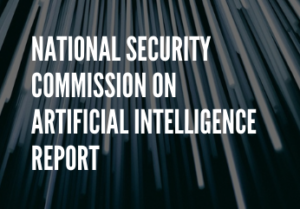
Americans have not yet grappled with just how profoundly the artificial
intelligence (AI) revolution will impact our economy, national security,
and welfare. Much remains to be learned about the power and limits
of AI technologies. Nevertheless, big decisions need to be made now
to accelerate AI innovation to benefit the United States and to defend
against the malign uses of AI.
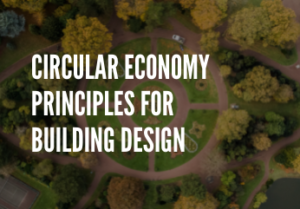
More than at any time before, we need to apply circular economy and resource efficiency principles to the building and demolition sectors to reduce resource use in the future. The European Commission has reaffirmed this challenging goal through the European Green Deal. However, it is far from easy to implement concepts of resource efficiency and the circular economy to buildings.
In regards of the diversity of Regulations in Europe and how European norms are articulated into national norms, we recognize that Circular economy must be implemented differently in every European country. The Circular Economy Principles for building design published by the European Commission in 2020 intend to propose a coherent circular economy scientific framework capable to recognize and mitigate negative interactions (trade-offs) and maximize positive synergies looking to establish coherent systemic agendas. Systemic and territorial solutions will benefit from collaboration between the public sector (as the data hub for circular economy monitoring and reporting), academia (to transfer research results to practice), and cooperation partners (civil society to be informed and actively participate; private sector to deploy new business opportunities connected to circular economy data and software). The actors involved are facing several existing or potential dilemmas: structural resistance versus easy to disassemble, longevity versus flexibility, simple versus composite products, renovations versus new-build, etc.
The successful implementation of the circular economy in the construction sector in Europe hinges on collaboration across sectors to allow for the circular and integrated use of materials and energy. Currently, a fair and open data ecosystem in the implementation of local circular economy principles in the construction and demolition sectors lacks coherent and comprehensive cross-sectional agendas within all levels of public authorities (from municipality to national offices) and within neighbouring territories and regions. The European Union has recognized this issue by developing the Circular economy principles for building design report (European Commission, 2020), building upon the previously established ‘Resource Efficiency Scoreboard’, ‘Raw Materials Scoreboard’ and “Waste Framework Directive” (Moraga et al., 2019).
This is an evidence-based report aiming to identify the drivers able to anticipate the divergences in the CE building design local implementation.
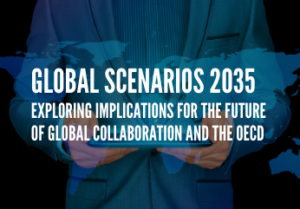
In 2021 the global economy as well as the political and regulatory structures that govern it are at a historic crossroads. COVID-19 has brought about disruption and heightened uncertainty with respect to future trajectories of changes such as digitalization and related technologies associated with Industry 4.0, geopolitical realignments, rising social inequalities and fragmentation, environmental crises and new threats to democratic governance. In this context, organizations of both private and public spheres around the globe face the challenge of modernizing and adapting to remain relevant, without knowing what the future will look like or entail.
This OECD report explores key drivers of change that could significantly affect the future of global collaboration in public policy.
The report presents three scenarios of the ways the world could be significantly different than expected in 2035.
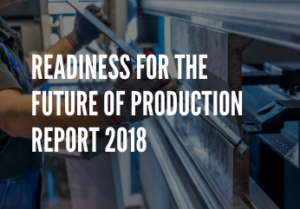
World Economic Forum’s readiness for the Future of Production Assessment 2018 analyses how well positioned countries are today to shape and benefit from the changing nature of production in the future. The assessment is made up of two main components: Structure of Production, or a country’s current baseline of production, and Drivers of Production, or the key enablers that position a country to capitalize on the Fourth Industrial Revolution to transform production systems.
The 100 countries and economies included in the assessment which comprise more than 95% of global manufacturing value added, are assigned to one of four archetypes. Lithuania is evaluated as a legacy country, ranked in 31st place out of 100 countries. Legacy countries have a strong production base today but are at risk for the future due to weaker performance across the Drivers of Production component. Japan, South Korea, Germany, Switzerland and China leads Readiness for the Future of Production 2018
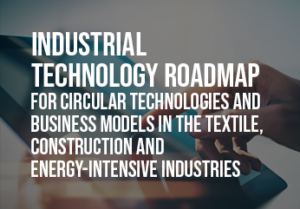
Industrial technology roadmaps under the new ERA for research and innovation support the implementation of the systemic EU Industrial strategies, by linking key partnerships under Horizon Europe with industrial ecosystems, and combining efforts to disseminate research results and roll them out faster in the economy.
This roadmap focuses on the EU industrial ecosystems for textile, construction and energy-intensive industries. These ecosystems stand out as they have an excessive impact on waste generation and pollution (air, soil and water pollutants) compared to their share of gross value added in the economy. Energy-intensive industries serve various value chains across different EU industrial ecosystems, influencing, among other things, their circularity.
When looking at the textile ecosystem for example, we find that technology development is overall quite well advanced for fibre-to-fibre chemical recycling, replacing raw materials with recycled materials, and automated fibre-sorting technologies. There are, however, several specific challenges to address, including the need to mitigate the current levels of pollution in the production process, by reducing the release of plastic microfibers from textile or material blend separation. Prioritizing end-of-life technologies without simultaneously developing design or pre-recycling stages (collection, sorting, and disassembly), could reduce these technologies’ beneficial effects. Furthermore, aspects related to consumer behavior are particularly relevant for the circularity of the textile ecosystem, as the sustainability of the fashion sector is strongly linked to consumption patterns.
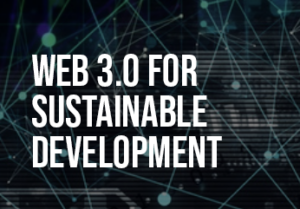
Web 3.0 is a polarizing term that refers to the emergence of the next generation of the internet. Web 3.0 represents a shift towards a more decentralized, open, and democratic internet that empowers individuals and communities and promotes greater collaboration and innovation. Web 3.0 draws on emerging technologies such as artificial intelligence and blockchain to enable decentralization, interoperability, and data sharing to encourage data democratization. While embryonic and unfolding, it has the capacity to transform many aspects of society and the economy. Indeed, social actors, including United Nations Development Programme, believe that Web 3.0 can offer important implications for achieving sustainable development goals (SDG). Web contributions to SDGs are multifaceted. For example, Web 3.0 can promote the development of digital identity solutions, boosting financial inclusion (SDG 1) and gender equality (SDG 5). The decentralization feature of Web 3.0 can empower decentralized governance and decision-making, which can enable the participation and representation of marginalized groups, boosting SDGs like reduced inequalities (SDG 10) and strong institutions (SDG 16). Furthermore, the data democratization aspect of Web 3.0 accelerates open knowledge sharing and collaboration, offering important opportunities for boosting quality education (SDG 4) and partnerships for the goals (SDG 17). Overall, Web 3.0 can address some of the world’s most prevailing challenges and boost inclusive sustainability.
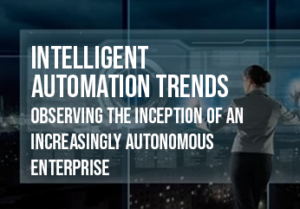
While ChatGPT, DALL-E, and other big models dominate media headlines, corporate digital transformation efforts are booming. Many have predicted that the end of the COVID-19 pandemic will coincide with a contraction of investments in digitalization initiatives. Instead, digital transformation efforts are gaining extra traction. An increasing number of scholars and consulting companies identify themselves under the intelligent (process) automation umbrella. Intelligent automation combines robotic process automation (RPA) and artificial intelligence (AI) technologies to automate non-routine processes. Recently, diverse digital innovations such as RPA, AI – Computer vision, AI – NLP/Conversational AI, intelligent document processing, process mining, workflow solutions, and others aimed at the augmentation of business processes and systems comprise the field. The organizing principles of intelligent automation are well documented and constitute an effort to represent and conceive the world through digital data and bring activities inside and outside organizations under the control of information systems (Schildt, 2022). Conversely, the organizational outcomes and implication of hyperautomation are less clear. We invite you to acquaint yourself with intelligent automation network and look into their whitepapers, including “THE INTELLIGENT AUTOMATION NETWORK TRENDS & SPENDS REPORT for 2023”, which is based on the survey of over 400 intelligent automation, RPA, and digital transformation leaders. 55% of these companies are planning to increase their digital transformation budgets in 2023. Seems that an interesting year lies ahead!

Beyond growth: Pathways towards sustainable prosperity in the EU, is a study published this month (May 2023) by the European Parliament Research Service (EPRS) focusing on the economic and socioecological challenges confronted by present-day society. In line with the IN4ACT-KTU research interests, the study provides insights into potential transition pathways and associated tools, offering a perspective on EU policies that surpasses mere growth-oriented approaches. In our researches, we claim that Industry 4.0 needs to addresses environmental and social dimension through the development of decision-making frameworks that explicitly consider socio-environmental criteria alongside economic and technological factors. This involves incorporating environmental impact assessments, cost-benefit analyses, and sustainability indicators into the decision-making process. By integrating environmental considerations into the decision-making framework, organizations can ensure that Industry 4.0 initiatives are able to handle complexity and align with sustainability goals and environmentally conscious practices. The iterative approach allows organizations to learn from experiences needs to be included in the transition patterns to address unintended consequences, and optimize sustainability outcomes over time.
Industrial 4.0 transition towards 5.0 has included the circularity principles into a more human-centric socioeconomic model, however not all the circular economy understandings fits theoretical into this initiative. There are at least four Circular economy schools of thoughts (Calisto Friant, Vermeulen, and Salomone 2020), but it is just the Transformational Circular Society school of thought that integrates the slowing down loop principle of the circular economy integrating the fundamental claims of degrowth to a human-centric and sustainable paradigm of Industry 5.0. The Transformational Circular Society for reducing consumption and economic activity to achieve sustainability. The slowing down loop aims to extend product lifecycles and reduce overconsumption patterns, thereby reducing the need for continuous growth and resource extraction. It aligns with the degrowth notion of prioritizing well-being over endless economic expansion, emphasizing the need for a steady-state economy within ecological limits.
| Approach to social, economic, environmental and political considerations | |||
| Holistic | Segmented | ||
| Technological innovation and ecological collapse | Optimism |
Reformist circular society (A reformed version of capitalism, compatible with sustainability and socio-technical innovation, falls short of achieving absolute eco-economic decoupling to avert ecological collapse) |
Technocentric circular economy (Capitalism, when aligned with sustainability and enabled by technological innovation, can facilitate eco-economic decoupling to prevent ecological collapse)
|
|
Skeptical
|
Transformational circular society (Capitalism, in its current form, is incompatible with sustainability, and socio-technical innovation alone cannot achieve absolute eco-economic decoupling to prevent ecological collapse) |
Fortress Circular economy (While no alternative to capitalism is evident, relying solely on socio-technical innovation cannot achieve absolute eco-economic decoupling, risking ecological collapse) |
|
Source: Inputs taken from (Calisto Friant, Vermeulen, and Salomone 2020)
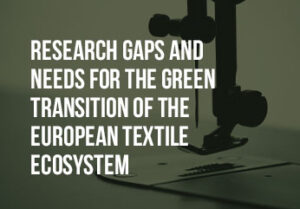
The School of Economics and Business at Kaunas University of Technology is an active member of the European Community of Practice for a Sustainable Textile Ecosystem (ECOSYSTEX). Dr. Manuel Morales, from our institution, played a significant role in contributing to the “Research Gaps and Needs for the Green Transition of the European Textile Ecosystem” report, which was published in July 2023. This report was the outcome of two months of collaboration among researchers, industry experts, and other stakeholders involved in the project.
The ECOSYSTEX Community has just released its inaugural Input Paper, which can be accessed here. This paper identifies the most urgent and impactful research gaps and requirements that need to be addressed to facilitate the transition toward a sustainable and eco-friendly European textile ecosystem.
The Ecosystex community (https://textile-platform.eu/ecosystex) is a collaborative initiative involving the European Commission’s Research Executive Agency (REA), the European Health and Digital Executive Agency (HaDEA), and the Circular-Biobased Europe Joint Undertaking. This initiative is facilitated by the Textile ETP, a network of textile circularity projects, of which KTU is a part. The primary aim of this new network is to establish a long-term community of practice, promoting collaboration across project consortia and extending its influence beyond the individual project timelines.
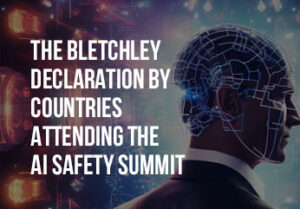
The concept of human-centricity is consistently emphasized in the Blentchley Declaration on November 1st, 2023. To clarify the significance of adopting a human-centered approach, it is imperative to scrutinize and no longer disregard it. Recognizing the centrality of humanity is crucial in comprehending the transition to Industry 5.0, even though it may not always receive the acknowledgment it deserves. The intricacies inherent in human-centricity necessitate an integrative approach informed by systemic thinking. Industry 5.0, in essence, aims to simultaneously identify the interconnections and patterns that define the human-centered approach amidst socioeconomic and environmental transitions.
The transition toward a human-centric paradigm within Industry 5.0 can be likened to social complex adaptive systems (SCAS). When dealing with emerging societal shifts, it is imperative to acknowledge that not all facets can be controlled simultaneously. It is crucial to recognize that the multifaceted complexities, or in other words, the various elements of the socioeconomic ecosystem, are continuously emerging and forging new connections. However, viewing this through the lens of a social complex adaptive system provides a means to better anticipate, adapt to, and build resilience in a collaborative and more balanced manner.
The shift from Industry 4.0 to 5.0 has already presented and will continue to present tangible real-world transitional challenges to manage and sustain. Our understanding of what an Industry 5.0 transition might entail will be shaped by well-defined concepts rooted in social constructivism and a human-centered perspective. Understanding the impact of socially conscious, human-centric transitions within Industry 5.0 is essential if we aspire to proactively anticipate, analyze, and plan for a sustainable, resilient, and circular paradigm for our collective societies.
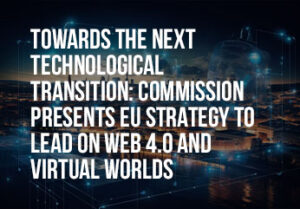
The European Union’s (EU) recently revealed strategy for Web 4.0 and virtual worlds is nothing short of ambitious, aiming to position the EU as a major player in these emerging digital frontiers. This forward-thinking approach, while commendable, raises a curious question about how it aligns with or contrasts against the broader concept of Industry 5.0, which is gaining prominence on a global scale.
This strategy emphasizes the creation of an open, secure, and inclusive digital environment. However, it is notable that the definition of Web 4.0 remains somewhat elusive. This ambiguity may present an opportunity for further investigation into the specifics of this concept, as it underscores the complexity of the digital landscape. At its core, Web 4.0 is geared toward harnessing the potential of virtual worlds for various applications, including business and governance. The strategy outlines the significance of interoperability and global standards. Yet, it poses an intriguing question: how does this vision fare against the broader concept of Industry 5.0?
Industry 5.0 is an extension of the Industry 4.0 paradigm, emphasizing the integration of humans and machines, particularly in the manufacturing and industrial sectors. While Web 4.0 and Industry 5.0 are distinct, they share a common thread in their pursuit of technological advancement and transformation. The intersection of Web 4.0 and Industry 5.0 prompts further inquiry. Are these two visions complementary or potentially at odds? Could Web 4.0 serve as the digital infrastructure that supports the human-machine collaboration envisaged in Industry 5.0? Or do they present competing visions of the future, with implications for global industries and economies?
In an era of rapid technological evolution, the synergy or tension between the EU’s Web 4.0 strategy and the broader Industry 5.0 concept is of significant interest and uncertainty. The success of these agendas depends not only on their individual merits but also on their ability to coexist harmoniously, fostering progress while addressing the challenges of a rapidly evolving digital and industrial landscape.
Ultimately, the EU’s ambitious vision for Web 4.0 and virtual worlds invites exploration and scrutiny. While the strategy lacks a concrete definition of Web 4.0, it raises critical questions about how these initiatives will unfold and, crucially, how they will shape the digital and industrial landscape in the years to come. The stage is set for both further investigation and for evaluating the EU’s progress in achieving its lofty goals.
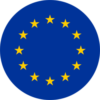
Industry 4.0 Coordination Plans